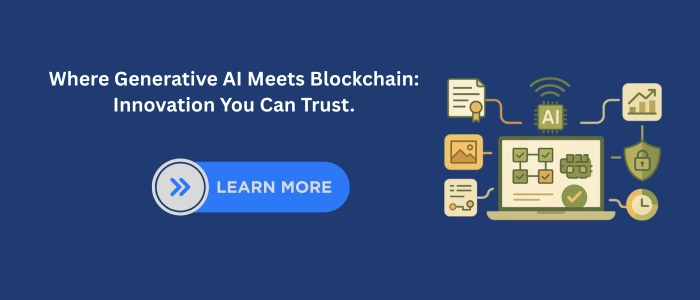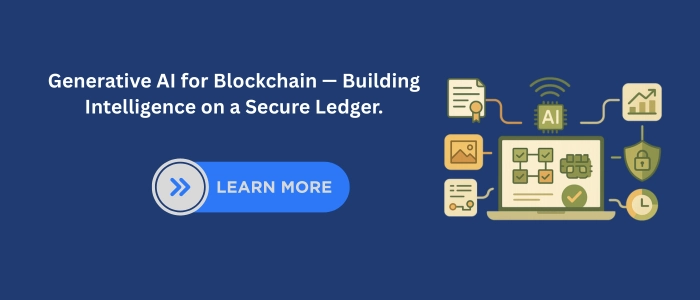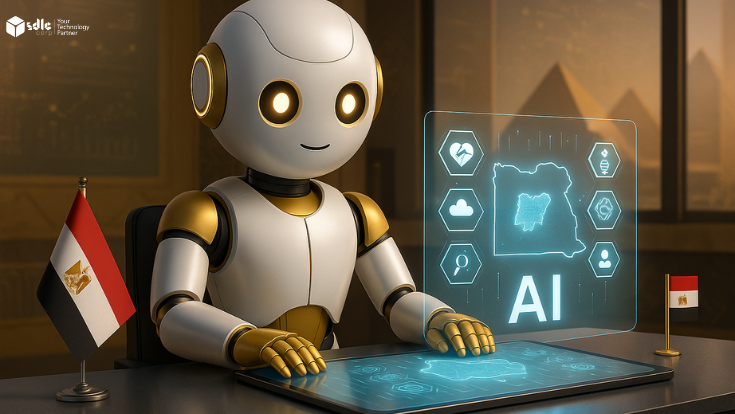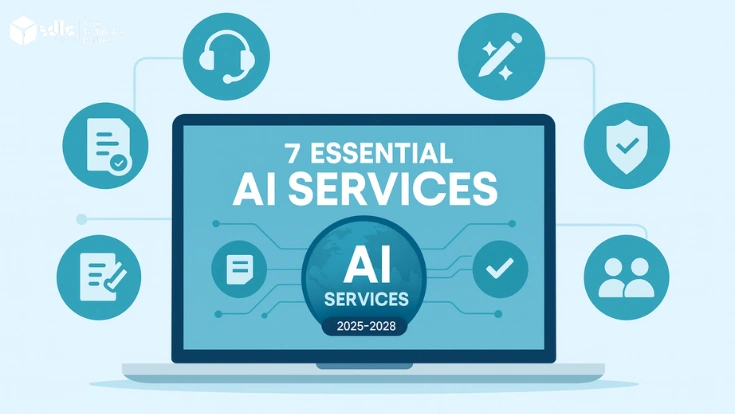Introduction
Generative AI blockchain integration is transforming how digital systems operate. By combining AI’s creative and predictive capabilities with blockchain’s transparency and security, organizations gain smarter, more reliable processes.
This integration enables efficient smart contract generation, strengthens blockchain security, and opens new creative possibilities such as AI-powered NFT creation.
Beyond automation, it supports scalable diffusion models and transparent AI decision ledgers, ensuring every transaction is verified and trustworthy. Businesses adopting this approach are not only driving innovation but also meeting compliance needs, positioning themselves at the forefront of secure, intelligent, and future-ready digital ecosystems.
Understanding Generative AI and Blockchain Integration
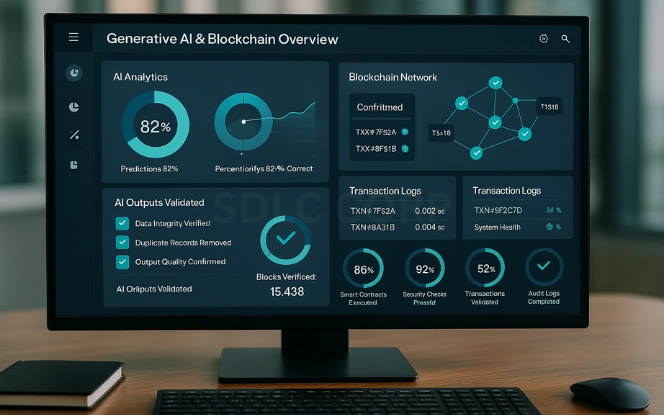
Generative AI creates new outputs by learning from existing data. Blockchain records transactions across decentralized networks. When these two technologies come together, the outcome is powerful.
Generative AI blockchain integration allows AI to generate predictions and content while blockchain validates, secures, and records each step. For example, AI may propose a contract clause while blockchain confirms the authenticity and timeline.
Key Benefits:
AI creates scalable outputs; blockchain ensures clarity.
Together they reduce risks of fraud, duplication, or tampering.
This pairing enables both innovation and accountability.
Role of Generative AI in Blockchain Systems:
Blockchain platforms handle complex logic, large datasets, and strict validation rules. Generative AI can support these systems by assisting with smart contract drafting, protocol documentation, and pattern analysis across on-chain data. Teams often explore Generative AI development services to design models that work within blockchain constraints, such as immutability, transparency, and deterministic execution.
In short, AI adds intelligence, and blockchain adds trust.
The Technical Side of Generative AI Blockchain Integration
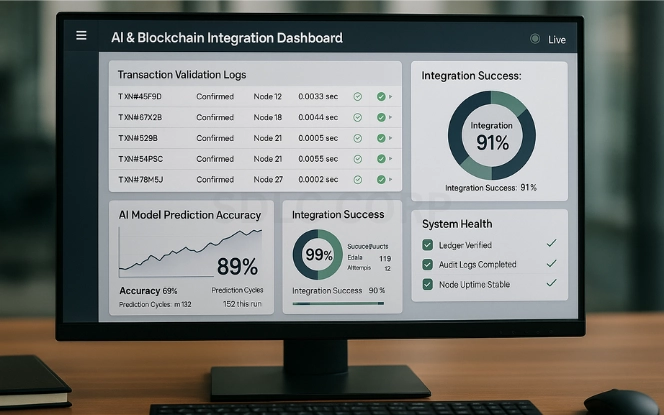
The technology behind this integration combines AI model outputs with blockchain verification. Data generated by AI passes through validation layers and is stored on blockchain.
Data Flow: AI produces content or predictions → Blockchain validates the record → Ledger stores results.
Security Layer: Every AI output gets linked to a verifiable block.
Transparency: Logs allow third-party audits without altering the original.
As a result, errors are reduced, and accountability improves. Moreover, blockchain offers an immutable base, while AI adapts and evolves.
This system builds a cycle of generation, validation, and storage. Each cycle improves the accuracy of models and the strength of security.
Smart Contracts and Generative AI Blockchain Use Cases
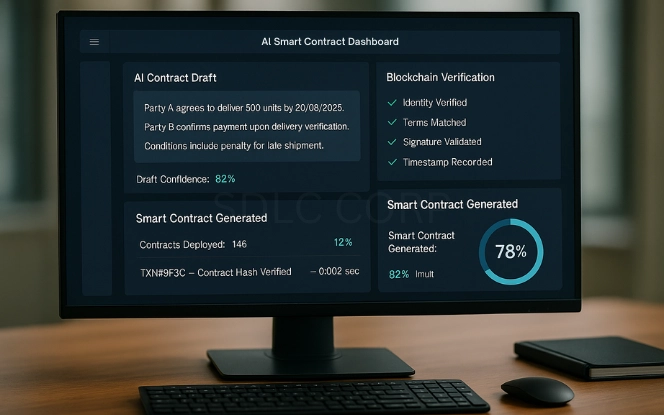
Smart contracts are agreements stored and executed on blockchain. With AI integration, these contracts can now be generated and validated automatically.
Drafting: AI creates contract drafts.
Validation: Blockchain confirms each condition.
Execution: Once triggered, the contract acts without delay.
Smart Contract Development and Review:
Writing and auditing smart contracts requires precision. Generative AI can help by suggesting contract structures, identifying common vulnerabilities, and summarising audit findings. However, these models must be tuned carefully to avoid unsafe outputs. Some teams choose to hire generative AI developers who understand both blockchain environments and model limitations, ensuring outputs remain accurate and verifiable.
For example, a logistics company can use AI to draft delivery terms while blockchain verifies milestones such as shipment and receipt. This reduces disputes and improves speed.
In addition, smart contracts supported by AI become dynamic. They adjust based on new inputs, but blockchain ensures the history of changes is always preserved.
Generative AI Blockchain Security at Scale
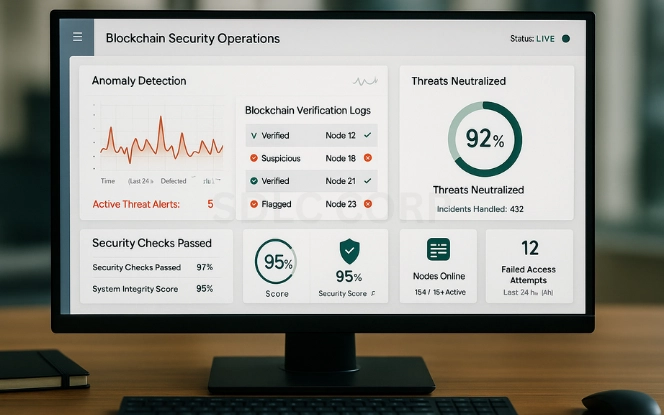
Security remains a major challenge in digital systems. Generative AI and blockchain together create layered defenses.
Anomaly Detection: AI spots unusual patterns in real time.
Verification Logs: Blockchain records alerts and responses.
Threat Response: Verified neutralization steps get stored for audits.
For instance, AI may detect a suspicious login attempt. Blockchain records both the detection and the resolution. Therefore, businesses achieve not only prevention but also a verifiable trail of actions.
This integration ensures that security is continuous, transparent, and adaptive to new threats.
AI-Powered NFT Creation Through Blockchain Integration
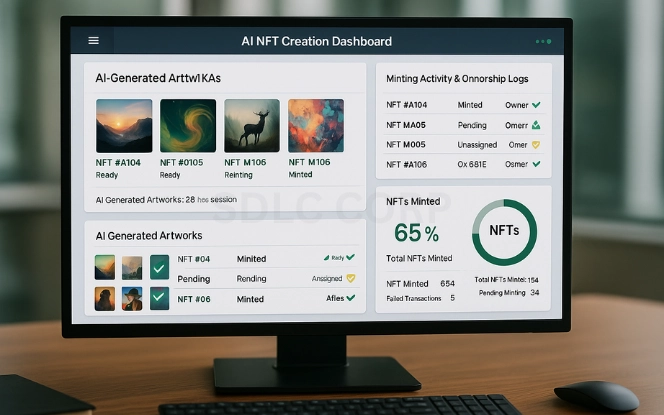
NFTs are unique digital assets. AI adds creativity, while blockchain ensures authenticity.
AI Role: Generates original artwork, music, or text.
Blockchain Role: Verifies ownership and transaction logs.
Combined Result: Transparent creation and transfer of value.
For example, AI might create digital art while blockchain confirms the rightful owner. As a result, the NFT ecosystem becomes richer and safer.
Moreover, this method reduces fraud by ensuring that even AI-generated content has a verifiable chain of ownership.
Generative Diffusion Models for Blockchain Optimization
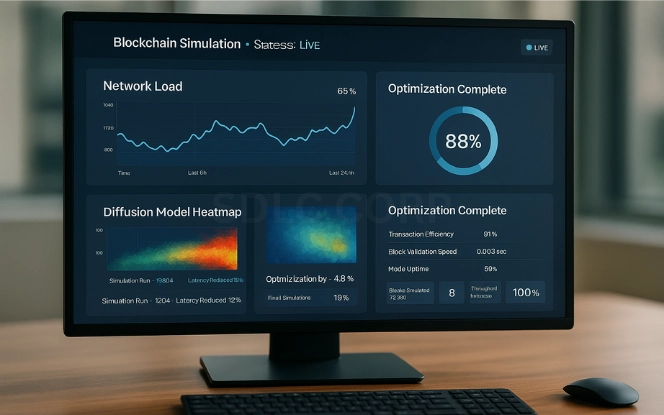
Generative diffusion models simulate outcomes under changing conditions. When applied to blockchain, they improve performance.
Network Simulation: Models predict traffic spikes.
Load Balancing: AI suggests adjustments.
Validation: Blockchain stores results for auditing.
As a result, blockchains can handle more users without slowing down.
For instance, a financial platform may face thousands of transactions per second. AI diffusion models prepare the system, while blockchain records the efficiency improvements.
Transparent AI Decision Ledger in Blockchain Systems
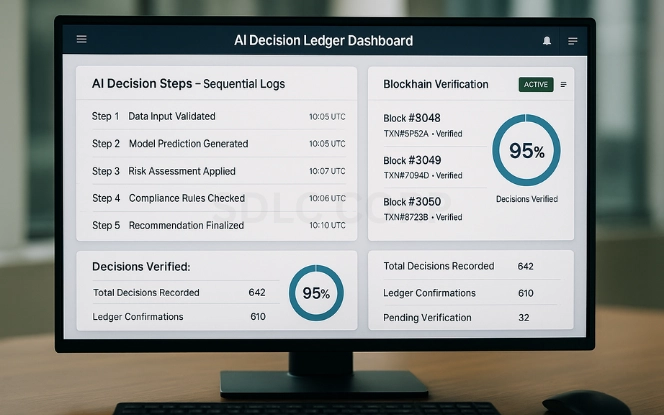
AI decisions often appear as “black boxes.” Blockchain solves this problem by creating transparent ledgers.
AI Step Logs: Each action AI takes is listed in sequence.
Verification Timeline: Blockchain confirms these steps.
Decision Trust: Users can trace why a decision was made.
For example, if AI rejects a loan application, blockchain shows the decision path. As a result, trust increases, and disputes decrease.
This integration ensures AI decisions are not only intelligent but also explainable.
Industry Use Cases of Generative AI Blockchain Integration
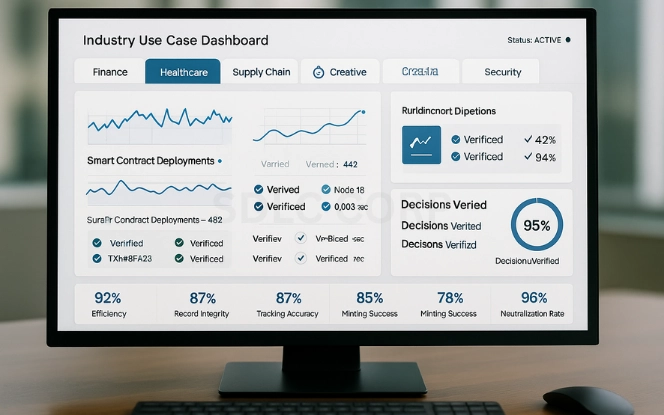
The synergy of generative AI and blockchain spans multiple industries:
Finance and Smart Contracts
Banks can use AI to draft agreements while blockchain verifies compliance. This reduces manual errors and improves fraud detection.
Healthcare Data Security
AI helps analyze patient data, while blockchain secures records. As a result, both privacy and compliance are maintained.
Supply Chain Optimization
AI predicts demand, while blockchain tracks shipments. This ensures efficiency and transparency at each stage.
NFT and Creative Applications
Artists can use AI to create digital works. Blockchain ensures ownership is recorded, preventing theft or duplication.
Cybersecurity and Compliance
AI detects threats, blockchain logs responses, and regulators can audit without delay. This layered approach improves trust in digital platforms.
Ethical and Regulatory Considerations in AI-Blockchain Integration
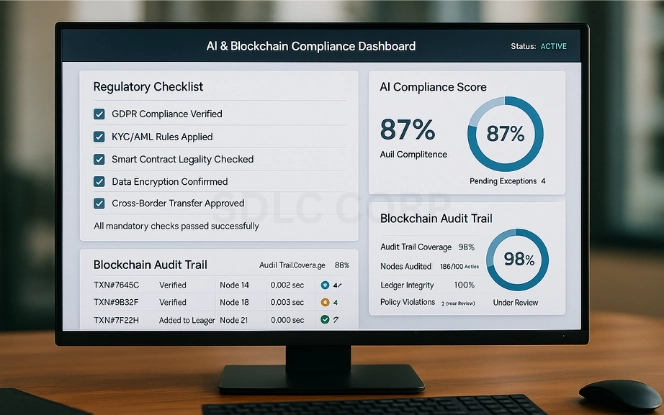
As these technologies grow, ethical and regulatory questions follow.
Privacy: AI needs data, but blockchain records permanently.
Compliance: Laws such as GDPR and AML require careful application.
Bias: AI must be trained to avoid unfair outcomes.
Governance, Risk, and Integration Planning:
As blockchain projects mature, governance and risk management become central concerns. Generative AI can assist with compliance reporting, proposal analysis, and decision-support tools for decentralised systems. In these cases, working with a Generative AI consulting company helps teams evaluate where generative models add value, while also setting boundaries for security, data handling, and system accountability.
Therefore, organizations must plan carefully. Transparency is vital, and blockchain provides tools for clear records. In addition, ongoing audits ensure compliance with both legal and ethical standards.
The Future of Generative AI and Blockchain Integration
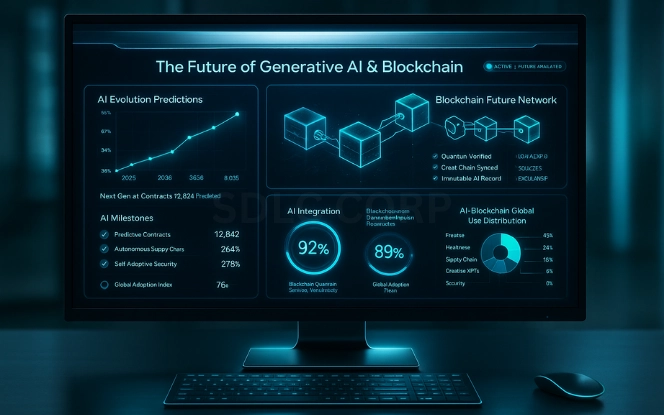
Generative AI blockchain integration is still evolving. Future systems may use quantum nodes, predictive contracts, and global adoption frameworks.
In addition, AI may improve blockchain scalability, while blockchain ensures AI remains transparent. As a result, industries can build systems that are both intelligent and secure.
Businesses investing in this future will gain early advantages in efficiency, creativity, and compliance.
Conclusion
Generative AI blockchain integration is not just a trend. It is a practical way to improve contracts, security, NFTs, and compliance.By combining AI’s creativity with blockchain’s clarity, organizations gain smarter processes and stronger trust. Moreover, they ensure every action is both innovative and verifiable.
As industries adopt these solutions, ethical standards and regulations will be essential. Organizations must act responsibly while embracing innovation. To learn how these technologies can meet your business needs, Contact us SDLC corp today.
To take the next step, Hire AI Development Services with SDLC Corp and explore how tailored solutions can transform your organization.
Read Related Blogs:
FAQs
How Does Generative AI Blockchain Integration Work?
Generative AI blockchain integration combines the adaptability of AI with the transparency of blockchain. AI generates insights, predictions, and automated processes, while blockchain secures outputs through immutable records. This integration improves trust, scalability, and efficiency across industries.
What Is The Role Of AI Smart Contract Generation?
AI smart contract generation automates the creation of contracts on blockchain. It reduces errors, increases accuracy, and ensures faster deployment. Businesses benefit from transparent agreements that execute automatically without intermediaries, improving security and efficiency.
How Does Generative AI Blockchain Security Improve Systems?
Generative AI blockchain security strengthens protection by simulating threats, detecting vulnerabilities, and predicting risks. Blockchain verifies these actions, ensuring resilience against fraud and cyberattacks. This approach is especially valuable for financial platforms and decentralized applications.
What Are The Benefits Of AI-Powered NFT Creation?
AI-powered NFT creation allows unique digital assets to be generated automatically while blockchain ensures authenticity. Artists, collectors, and businesses can create and trade NFTs with confidence, knowing ownership is verifiable and secure.
Why Is A Transparent AI Decision Ledger Important?
A transparent AI decision ledger records every AI process on blockchain. This ensures accountability, traceability, and compliance in industries like healthcare, finance, and supply chain management. It builds trust in AI-driven decisions by making them verifiable.

